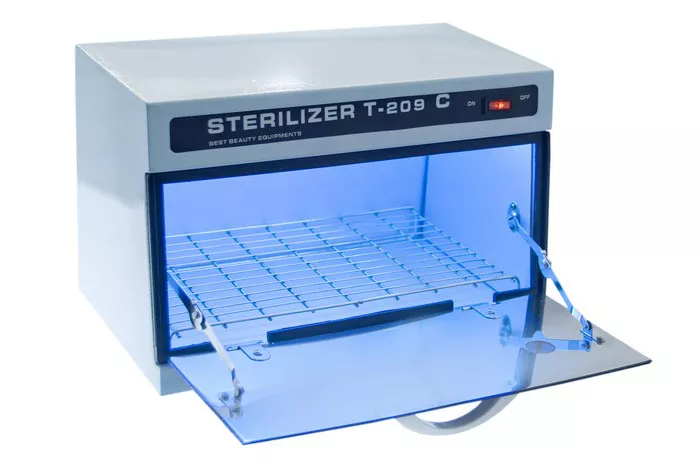In recent years, UV bottle sterilizers have gained popularity as an efficient and convenient method for killing harmful bacteria and viruses on baby bottles and pump parts. However, as with any new technology, concerns about safety and efficacy have emerged. This article aims to provide a comprehensive analysis of the safety aspects surrounding UV bottle sterilizers, including how they work, potential safety concerns, a comparison with steam sterilizers, effectiveness, recommendations, alternatives, and user guidelines.
Explanation of UV Sterilization:
UV sterilization utilizes ultraviolet (UV) light, specifically UVC light, to destroy the DNA of microorganisms, rendering them unable to reproduce and effectively killing them. UVC light has a wavelength between 200 and 280 nanometers, making it highly effective at sterilization. UV sterilizers typically consist of a chamber where items to be sterilized are placed, and UV lamps emit UVC light to disinfect the surfaces of these items.
The process is relatively straightforward: when bacteria, viruses, or other pathogens are exposed to UVC light, their DNA absorbs the light energy, causing damage to their genetic material. This damage prevents them from replicating, effectively neutralizing their ability to cause infections. UV sterilization is widely used in various industries, including healthcare, food processing, and water purification, due to its effectiveness and efficiency in killing a broad spectrum of microorganisms.
Safety Concerns:
Despite the effectiveness of UV sterilization, there are legitimate safety concerns associated with its use, particularly regarding the potential degradation of plastics used in bottles and pump parts. Prolonged exposure to UVC light can cause certain types of plastics to degrade, leading to issues such as cracking or discoloration. This degradation may compromise the structural integrity of the items being sterilized, potentially rendering them less safe for use.
To mitigate these concerns, manufacturers of UV sterilizers often provide guidelines on the types of materials that are safe to sterilize and recommendations for usage times to minimize the risk of damage. Additionally, users should ensure that the UV sterilizer they choose complies with relevant safety standards and regulations to minimize potential risks.
Comparison with Steam Sterilizers:
Another widely used method for sterilizing baby bottles and pump parts is steam sterilization. Steam sterilizers, also known as autoclaves, use high-pressure steam to kill microorganisms effectively. Unlike UV sterilizers, which rely on UVC light to disinfect surfaces, steam sterilizers provide a more thorough sterilization process by reaching all parts of the bottle, including crevices and hard-to-reach areas.
While both UV and steam sterilizers are effective at killing bacteria and viruses, they differ in their operation, efficacy, and safety considerations. UV sterilizers offer the advantage of faster sterilization times and no need for water or chemicals, making them convenient for everyday use. However, steam sterilizers are often considered the gold standard for sterilization due to their ability to reach all parts of the bottle and provide a more thorough disinfection process.
Effectiveness:
UV sterilizers are typically marketed as being capable of killing 99.9% of germs and bacteria when used correctly. However, it’s essential to note that sterilization is only complete where the UVC light reaches. Items that are shaded or have intricate designs may not receive adequate UV exposure, potentially leaving some areas inadequately sterilized.
To ensure effective sterilization, it’s crucial to follow the manufacturer’s instructions carefully, including proper placement of items within the sterilization chamber and adherence to recommended sterilization times. Regular maintenance of the UV lamps is also essential to ensure consistent performance over time.
Recommendations:
When considering the use of UV bottle sterilizers, it’s essential to consider the types of bottles and materials being sterilized. Some manufacturers may advise against using UV sterilizers with certain types of plastics or materials that are prone to degradation when exposed to UVC light. Additionally, users should be mindful of any specific recommendations provided by the manufacturer regarding usage times and sterilization procedures.
For optimal safety and effectiveness, it’s recommended to choose a UV sterilizer from a reputable manufacturer that complies with relevant safety standards and regulations. Regular inspection and maintenance of the sterilizer, including replacement of UV lamps as needed, will help ensure consistent performance and minimize potential risks.
Alternatives:
While UV sterilization offers a convenient and effective method for sterilizing baby bottles and pump parts, there are alternative sterilization methods available that may better suit certain preferences or requirements. Steam sterilization, for example, is widely regarded as the gold standard for sterilization due to its thorough disinfection process and ability to reach all parts of the bottle.
Other alternatives to UV sterilization include boiling water sterilization, chemical sterilization using disinfectant solutions, or microwave sterilization. Each method has its advantages and limitations, and users should carefully consider their specific needs and preferences when selecting a sterilization method.
User Guidelines:
To ensure safe and effective use of UV bottle sterilizers, it’s essential to follow these guidelines:
1. Read and follow the manufacturer’s instructions carefully, including recommendations for usage times and proper placement of items within the sterilization chamber.
2. Inspect the sterilizer regularly for any signs of damage or wear, and replace UV lamps as recommended by the manufacturer.
3. Use caution when handling UV sterilizers to avoid exposure to harmful UVC rays. Some models may include safety features such as automatic shut-off mechanisms to minimize the risk of accidental exposure.
4. Choose bottles and materials that are compatible with UV sterilization to minimize the risk of degradation or damage.
5. Consider alternative sterilization methods if UV sterilization is not suitable for your specific needs or preferences.
By following these guidelines and exercising caution, users can safely and effectively utilize UV bottle sterilizers to ensure the cleanliness and safety of baby bottles and pump parts.


